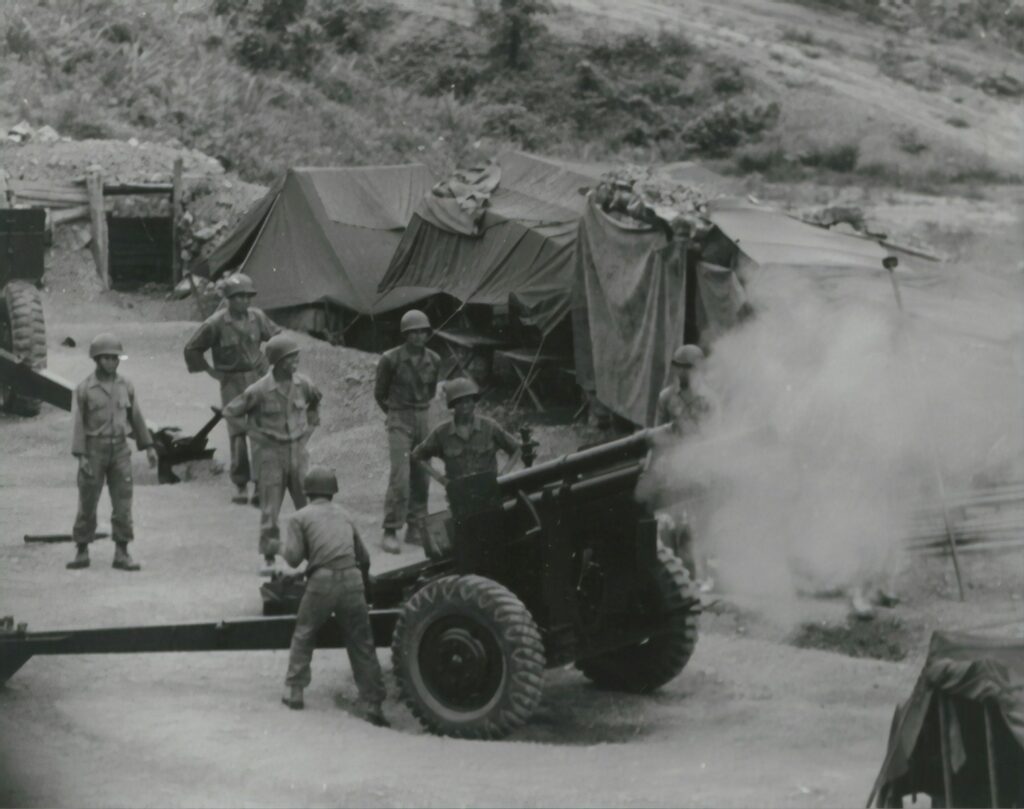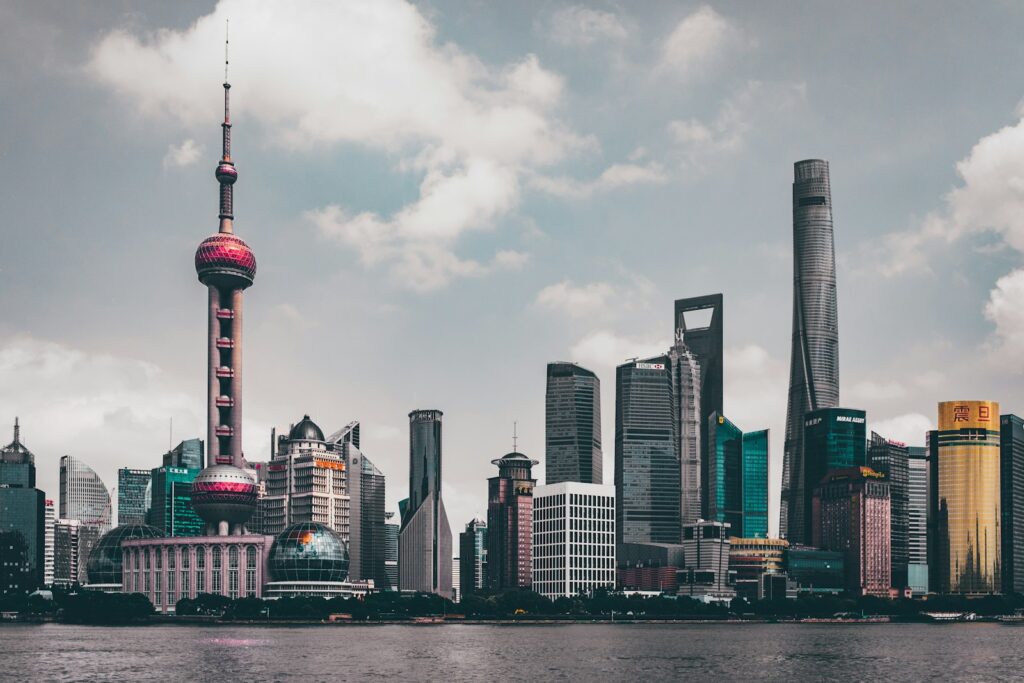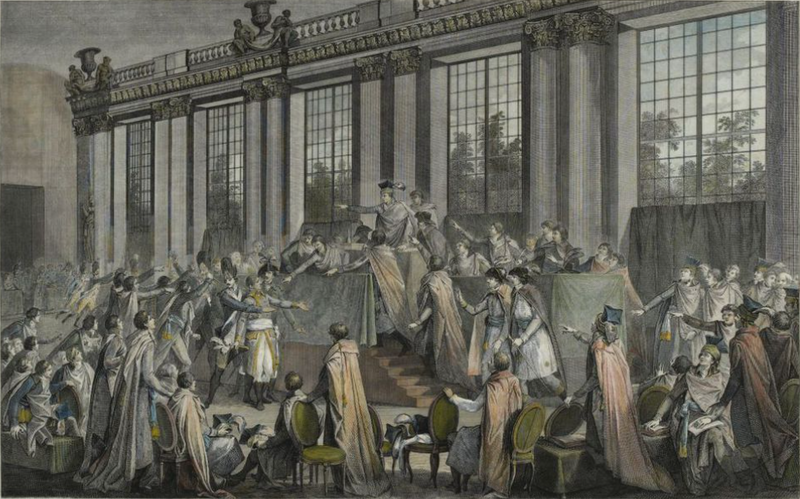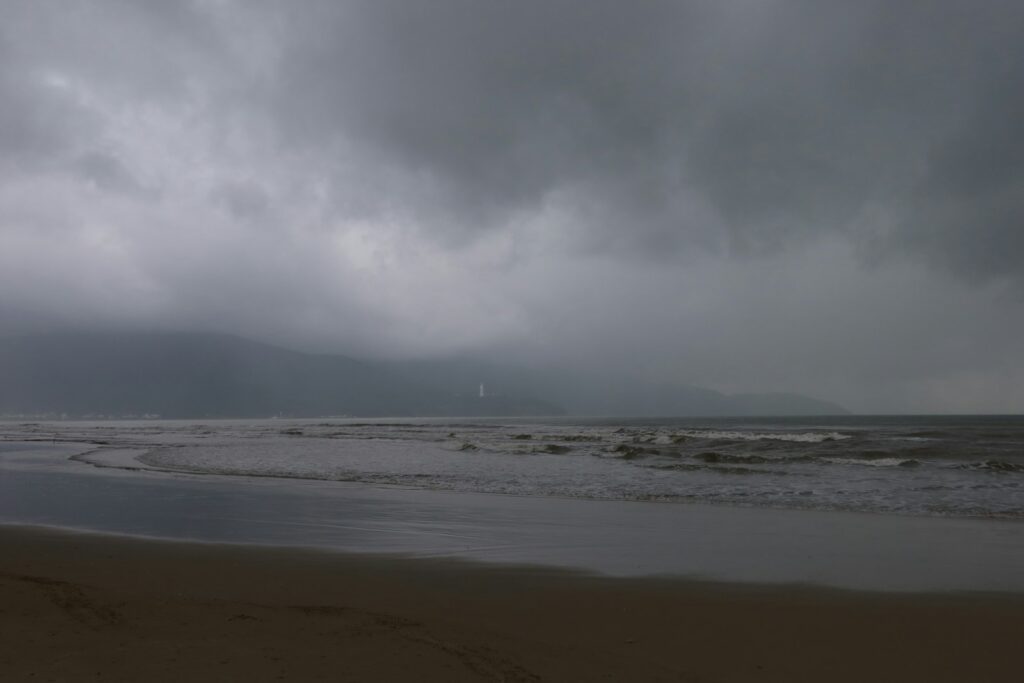
Ah, the 1970s! It’s a decade that often gets painted with broad strokes – a hazy, disco-infused memory, perhaps. But beneath the surface of polyester and bell bottoms, the Seventies was a seismic period, profoundly reconfiguring the geopolitical landscape, challenging long-held economic theories, and giving birth to social and technological transformations that still echo loudly in our present. Historians, with the wisdom of hindsight, now increasingly pinpoint this era as a “pivot of change” in world history, a testament to its incredible dynamism and complex tapestry of events.
Indeed, the decade from 1970 to 1979 was a crucible where old orders crumbled and new paradigms emerged. From the battlefields of Southeast Asia to the bustling halls of global diplomacy, from the quiet hum of nascent microprocessors to the thunderous cries for political liberty, the world was in constant, often tumultuous, motion. It was a time marked by frequent coups, brutal civil wars, and economic upheavals that rattled the foundations of industrialized nations, yet also saw extraordinary advances in science and an undeniable surge in social consciousness.
So, prepare to peel back the layers of this fascinating era. We’re embarking on a journey to explore seven pivotal moments and transformative trends that weren’t just headlines but foundational shifts, demonstrating how the ’70s truly mastered the art of global change and left an indelible mark on the unfolding story of humanity. Get ready to rediscover a decade that was anything but quiet.

1. **The Fading Roar of Vietnam and Southeast Asian Upheaval**The 1970s inherited the simmering cauldron of the Vietnam War, a conflict that had already reshaped global perceptions and domestic policies. As the decade dawned, the United States was still deeply involved, but political pressure at home mounted inexorably, leading to America’s official withdrawal from the war in 1973. This marked a profound turning point, not just for American foreign policy, but for the balance of power across Southeast Asia.
The culmination of this long, bitter conflict arrived dramatically in 1975 with the Fall of Saigon and the unconditional surrender of South Vietnam on April 30. The image of evacuations from Saigon, particularly of South Vietnamese allies, became an enduring symbol of the war’s end. The following year, Vietnam was officially declared reunited, closing a painful chapter that had profoundly impacted millions and redefined global military intervention.
However, the echoes of war continued to reverberate throughout the region. The Cambodian Civil War, which had raged since 1967, also came to a brutal end in 1975, when the Khmer Rouge, led by Pol Pot, captured Phnom Penh. This ushered in one of the darkest periods in human history, as Pot’s communist government established Democratic Kampuchea, forcing people out of cities to create a radical, agrarian society. Their horrific policies targeted anyone perceived as intellectual or aligned with foreign influences, leading to the Cambodian genocide, where as many as 3 million people may have died from torture, execution, or forced labor.
This catastrophic era in Cambodia concluded at the start of 1979 when Vietnam invaded the country, overthrowing the Khmer Rouge and installing a satellite government. This intervention, in turn, provoked a brief but furious border war with China in February of that year. The events in Southeast Asia during the 1970s serve as a stark reminder of the devastating human cost and complex geopolitical ripple effects of prolonged conflict and radical ideological shifts.

2. **The Shifting Sands of Global Power: China’s Re-emergence**For decades, the People’s Republic of China had existed largely in international isolation, a vast and enigmatic power with limited global engagement. However, the 1970s heralded a monumental shift in its international relations, fundamentally altering the global geopolitical landscape. This transformation began with China’s recognition by the United Nations, a crucial step that brought it onto the world stage and signaled a thawing of Cold War rigidities.
A pivotal moment arrived in 1972 when United States President Richard Nixon made a historic visit to the country, following earlier groundwork laid by Henry Kissinger in 1971. This groundbreaking engagement restored relations between the two countries, although formal diplomatic ties would not be fully established until 1979. It was a strategic maneuver that not only redefined US-China relations but also served as a significant counterweight against Soviet expansionism, fundamentally altering the dynamics of the Cold War.
The mid-1970s also witnessed profound internal changes within China. In 1976, two towering figures of the Chinese Communist Revolution, Mao Zedong and Zhou Enlai, both passed away. Their deaths marked the symbolic end of the Cultural Revolution, a tumultuous period that had deeply impacted Chinese society for a decade. This created a vacuum and an opportunity for a new direction, setting the stage for significant reforms.
After a brief period under Mao’s chosen successor, Hua Guofeng, Deng Xiaoping emerged as China’s paramount leader. Deng, a pragmatic and visionary leader, began to steer the country away from ideologically driven policies and towards market economics, initiating a series of reforms that would eventually transform China into a global economic powerhouse. His visit to the US in 1979 further cemented China’s re-engagement with the West and heralded a new era of economic liberalization and international integration.

3. **Economic Shocks and the Dawn of Stagflation**If the 1960s had been characterized by a postwar economic boom, the 1970s abruptly ended that golden era, ushering in a period of unprecedented economic upheaval that sent shockwaves across the developed world. Historians frequently cite these economic challenges as a key reason for labeling the decade a “pivot of change,” as nations grappled with new realities and searched for radical solutions.
The most prominent of these upheavals was the 1973 oil crisis, triggered by oil embargoes imposed by the Organization of Arab Petroleum Exporting Countries (OPEC). This act, a direct response to geopolitical tensions in the Middle East, caused a financial crisis throughout the developed world, with skyrocketing fuel prices and profound industrial disruptions. The sheer scale of this crisis highlighted the newly emergent interdependence of global economies and exposed vulnerabilities that had previously been overlooked.
This period saw the first instance of a phenomenon that would define the era: stagflation. This economic nightmare combined high inflation with economic stagnation, including slow growth and high unemployment—a scenario that defied traditional Keynesian economic theories. The crisis initiated a profound political and economic trend, leading to the gradual replacement of Keynesian theory with neoliberal economic theory, advocating for reduced government spending, deregulation, and free trade. The first neoliberal government, in fact, came to power with the 1973 Chilean coup d’état, marking a significant ideological shift.
Even amid these global economic challenges, some regions found a way to thrive. Japan, despite facing the same OPEC embargo and oil crisis, witnessed a remarkable economic boom during this period. Its innovative industries and strategic economic policies allowed it to overtake the economy of West Germany, becoming the second-largest in the world. This demonstrated a shifting economic power balance and highlighted the varied responses of nations to a shared global predicament.
Read more about: Beyond the Stage: 11 Pivotal 1970s Moments That Forged the Future We Know Today

4. **Decolonization’s Final Chapters and African Strife**The 1970s saw the final significant waves of decolonization, particularly in Africa, as the vestiges of European empires crumbled. This era was heralded by new flags and anthems, but often shadowed by ensuing internal conflicts and geopolitical realignments. The continent, long under the thumb of colonial powers, was now charting its own course, a journey fraught with both immense promise and considerable peril.
A major catalyst for African independence in the mid-70s was the Carnation Revolution in Portugal in 1974. This military coup overthrew the Portuguese fascist regime, and its ripple effects quickly reached Portugal’s African colonies. Consequently, Angola and Mozambique gained their independence in 1975, marking the formal end of the Portuguese Empire. Similarly, Spain withdrew its claim over Spanish Sahara in 1976, concluding the Spanish Empire’s presence on the continent.
However, newfound independence did not automatically bring stability or peace. Far from it. The continent was tragically plagued by endemic military coups, civil wars, and devastating famines, as nascent nations struggled to establish governance and manage diverse ethnic and political factions. The withdrawal of colonial powers often left power vacuums, leading to high-intensity conflicts and external interventions, as seen in the Angolan Civil War (1975–2002), which saw multiple countries intervening on Marxist and anti-Marxist sides.
One of the most striking examples of this internal upheaval was the overthrow of Ethiopia’s long-reigning Emperor Haile Selassie in 1974 by a communist junta. This event marked the end of one of the world’s longest-lasting monarchies, dramatically altering the political structure of East Africa. Additionally, conflicts like the Ogaden War (1977–1978) between Somalia and Ethiopia, fought over territorial control, underscored the complex challenges of nation-building and border disputes in post-colonial Africa.
Read more about: Beyond the Stage: 11 Pivotal 1970s Moments That Forged the Future We Know Today

5. **Middle East in Flux: Wars and Early Peace Efforts**The Middle East, perpetually a hotbed of geopolitical tension, experienced an initial surge in violence in the early 1970s, culminating in a dramatic turn towards peace by the end of the decade. The ongoing Arab–Israeli conflict, a defining struggle of the 20th century, reached another peak, capturing global attention and demonstrating the region’s volatility. These conflicts and subsequent peace efforts fundamentally altered alliances and regional dynamics.
October 1973 brought the Yom Kippur War, a conflict launched by Egypt and Syria against Israel with the aim of recovering territories lost in the 1967 conflict. The Israelis were initially taken by surprise, suffering heavy losses before they could rally their forces. The Egyptian military, equipped with Soviet weaponry, successfully crossed the Suez Canal, while Syria simultaneously attacked in the Golan Heights, igniting intense fighting that drew in various international powers through proxies.
Despite the initial setbacks, Israel managed to repel the combined Arab assault, eventually crossing the Suez Canal into Egypt proper, and pushing back the Syrian advance. The war was a stark demonstration of the continued military capabilities and strategic importance of all parties involved, yet it also opened an unexpected pathway for future diplomacy. The sheer cost and intensity of the conflict led to a reconsideration of strategies on all sides.
A fundamentally altered situation emerged in the late 1970s, spearheaded by extraordinary diplomatic efforts. In 1978, Egyptian President Anwar Sadat made a courageous move, signing a peace treaty with Israel at Camp David in the United States, alongside Israeli Prime Minister Menachem Begin and US President Jimmy Carter. This landmark agreement, known as the Camp David Accords, led directly to the 1979 Egypt–Israel peace treaty, effectively ending outstanding disputes between the two countries. For their efforts, Sadat and Begin were jointly awarded the 1978 Nobel Peace Prize, though Sadat’s actions would tragically lead to his assassination in 1981, highlighting the deep internal divisions such a peace initiative could provoke.
Read more about: China’s Military Ambitions and the F-35 Conundrum: Unpacking the Geopolitical Realities in the Indo-Pacific

6. **The Rise of Women in Leadership**The 1970s built upon the social progressive values that had begun to blossom in the 1960s, particularly concerning the role of women in society. This decade witnessed an undeniable and accelerating growth in the political awareness and economic liberty of women, signaling a profound shift in gender roles within industrialized societies. More women were entering the non-agrarian workforce, challenging traditional norms and making their presence felt in spheres previously dominated by men.
Perhaps most strikingly, the 1970s stood out for the presence and rise of a significant number of women who ascended to the highest echelons of power, serving as heads of state and heads of government across various countries. Many of these trailblazing women were the very first in their nations to hold such formidable positions, carving out paths for future generations and embodying the spirit of changing times.
Among the most prominent was Margaret Thatcher, who, with the victory of her Conservative party in the 1979 election, became the first female British Prime Minister. Her rise marked not just a political milestone but also the beginning of a transformative era for the United Kingdom. Similarly, Indira Gandhi continued her tenure as Prime Minister of India, a role she held until 1977, demonstrating sustained female leadership in a major global power. Their tenures were not just symbolic but represented real political authority and influence on the international stage.
Beyond these well-known figures, the decade saw a broader phenomenon of women breaking through political glass ceilings. Isabel Perón became the first woman President in Argentina in 1974, though she was deposed in 1976. Elisabeth Domitien became the first woman Prime Minister of the Central African Republic. Maria de Lourdes Pintasilgo served as the first woman Prime Minister of Portugal in 1979. Soong Ching-ling continued as the first Chairwoman of the People’s Republic of China until 1972, and Lidia Gueiler Tejada became the interim President of Bolivia beginning in 1979. These leaders, from diverse political systems and geographical locations, collectively demonstrated an irreversible trend: women were not just participating in politics, but increasingly leading nations.
Read more about: Totally Rad ’80s Child Stars: Where Are They Now? An ’80s Kid’s Guide to Their Favorite Faces!

7. **A Decade of Dictators and Coups d’État**While the 1970s brought forth advancements in social progress and international diplomacy, it was also a grim period characterized by an alarming frequency of military coups, domestic conflicts, and the consolidation of repressive dictatorships across the globe. Over half the world’s population, in fact, lived under autocratic rule during this tumultuous decade, a stark reminder of the global struggle for power and control. These events often plunged nations into prolonged instability and human rights abuses.
Latin America, in particular, was ravaged by such upheavals. One of the most infamous instances was the coup d’état in Chile on September 11, 1973, which saw the socialist president Salvador Allende overthrown and killed in a military attack on the presidential palace. Augusto Pinochet, backed by the military junta and assisted by the Central Intelligence Agency (CIA) of the United States, seized power, establishing a brutal dictatorship that would last until 1990. In Argentina, President Isabel Perón initiated the “Dirty War,” a campaign against left-wing political dissidents, before she too was overthrown in a military coup in 1976 by Jorge Rafael Videla, who continued the brutal repression.
Africa was another continent deeply impacted by this trend. Idi Amin, who rose to power in Uganda in 1971 through a military coup, became infamous for his brutal dictatorship, persecuting opposition and pursuing a racist agenda against Asians. In Ethiopia, the long-reigning Emperor Haile Selassie was overthrown in 1974 by a communist junta led by General Aman Andom and Mengistu Haile Mariam, effectively ending one of the world’s longest-lasting monarchies. These shifts brought widespread instability and often profound human suffering to the continent.
Even in Europe, political systems were in flux. While the Carnation Revolution in Portugal in 1974 started as a military coup, it quickly evolved into a popular campaign for civil support, leading to the peaceful overthrow of the fascist regime and subsequent decolonization of its African territories. This unique event demonstrated that not all coups led to lasting authoritarianism, though the power vacuums left behind still contributed to civil wars in newly independent Lusophone African nations. Elsewhere, countries like Syria (Hafez al-Assad, 1970) and Pakistan (Zia ul Haq, 1977) saw military strongmen seize power, shaping their national trajectories for decades to come, underscoring a global pattern of political fragility and the assertive rise of authoritarian figures.
Read more about: 12 ’70s Power Players & Pivots: The Dominant Forces That Shaped a Decade, Then Disappeared or Transformed!
8. **Détente’s Twilight: The Escalation of Cold War Tensions**The early 1970s had seen a conscious effort by the United States and the Soviet Union to cool their ideological rivalry, a strategic easing known as détente. This period was predicated on the idea that global problems could and should be resolved through diplomacy and negotiation, a stark contrast to the bellicose confrontations of the preceding decades that had brought the world perilously close to nuclear annihilation on multiple occasions. It was a recognition, too, that the U.S. found itself in a weakened position following the harrowing experience and ultimate failure of the Vietnam War.
As a core tenet of this détente, the United States strategically restored ties with the People’s Republic of China, a monumental diplomatic pivot that not only redefined bilateral relations but also served as a significant counterweight against Soviet expansionism. This complex dance of alliances and strategic realignments aimed to diffuse direct superpower conflict, fostering a more indirect, yet still relentless, jockeying for control over smaller nations and spheres of influence across the globe. American and Soviet intelligence agencies became adept at providing funding, training, and material support to insurgent groups, governments, and armies, each vying to gain a geopolitical advantage.
However, this delicate balance of détente was irrevocably shattered at the close of 1979 with a brazen act that sent shockwaves across the international community: the Soviet invasion of Afghanistan. On December 27, 1979, the Soviet Union launched a full-scale military intervention, ostensibly to support the Afghan communist government against a burgeoning Islamist insurgency. This aggressive maneuver, which sparked the protracted Soviet-Afghan War, was widely condemned by the West and abruptly brought an end to the era of diplomatic relaxation. It reignited the flames of the Cold War, ushering in a new, more confrontational phase between the two superpowers, and set the stage for much of the geopolitical landscape of the ensuing decade. The global experience of the 1970s thus revealed the persistent interdependence of economies and political systems, set against a backdrop of a world increasingly polarized between these two titanic forces.

9. **The Shadow of Terror: A Global Surge in Militancy**While geopolitical maneuvering played out on the grand stage, a more insidious and unsettling threat began to metastasize globally throughout the 1970s: the rise in the use of terrorism by militant organizations. This decade witnessed a disturbing proliferation of groups across continents, employing bombings, kidnappings, and assassinations as tools to achieve their political aims. The world was forced to grapple with a new, terrifying form of warfare, one that often targeted civilians and spread fear far beyond the immediate victims, creating a sense of pervasive insecurity.
One of the earliest and most shocking instances of this new global terrorism occurred on September 6, 1970, an event that became known as “Skyjack Sunday.” Palestinian terrorists orchestrated the simultaneous hijacking of four airliners, taking over 300 innocent people hostage. While the hostages were eventually released, the dramatic explosion of the planes served as a grim spectacle, announcing a new and terrifying chapter in the annals of political violence. Two years later, the world watched in horror as the 1972 Summer Olympics in Munich, Germany, became a scene of unspeakable tragedy. Eleven Israeli athletes were kidnapped and brutally murdered by Palestinians belonging to the Black September organization, a horrific act that cemented the global recognition of modern terrorism’s reach and barbarity.
Europe, in particular, became a hotbed for such activities. Groups like the Red Brigades in Italy and the Baader-Meinhof Gang in West Germany were responsible for a spate of bombings, kidnappings, and murders, sowing chaos and fear in once-stable societies. Violence continued unabated in Northern Ireland, a deeply entrenched conflict often fueled by sectarian paramilitary groups, and the Middle East remained a nexus of terror, with various factions employing extreme tactics. Even in the United States, radical domestic groups like the Weather Underground and the Symbionese Liberation Army emerged, though they never quite achieved the scale or strength of their more formidable European counterparts, their actions nonetheless contributing to a pervasive sense of societal unease and fracturing.

10. **Microchips and Quarks: The Dawn of a New Technological Era**Beyond the political and economic tumult, the 1970s quietly but profoundly laid the groundwork for a technological revolution that would redefine modern life. This decade wasn’t just about bell bottoms and disco; it was a crucible of scientific innovation, fundamentally altering humanity’s understanding of the universe and its capacity to process information. It was an era when the abstract became tangible, and the impossible began to seem within reach, setting the stage for the digital age to come.
A monumental leap forward occurred with the appearance of the first commercial microprocessor, the Intel 4004, in 1971. This tiny, yet incredibly powerful, component marked a profound transformation of computing units. Previously, computers were rudimentary, spacious machines, the domain of large institutions and specialized engineers. The microprocessor, however, initiated their journey into portability and home accessibility, democratizing technology and hinting at a future where computing power would be ubiquitous. This seemingly small innovation cracked open the door to personal computers, a concept that would explode in the following decades, but whose genesis was firmly rooted in the breakthroughs of the ’70s.
Concurrently, the realm of theoretical physics witnessed extraordinary advances, consolidating our understanding of the fundamental forces of nature. The decade saw the confirmation of the existence of quarks, the elementary particles that make up protons and neutrons, and the detection of the first gauge bosons in addition to the photon – specifically, the Z boson and the gluon. These discoveries were pivotal to the unification of quantum field theory, leading to what was christened in 1975 as the Standard Model of particle physics. This model remains the most comprehensive theory of fundamental particles and forces, a testament to the intellectual prowess and collaborative spirit of scientists working during this transformative decade, forever changing our perception of the cosmos at its most basic level.

11. **Struggles for Self-Determination: Internal Nationalist Fissures**Even as former colonies gained independence, many established nations found themselves grappling with internal nationalist movements and demands for greater autonomy, reflecting a global aspiration for self-determination that often challenged existing political structures. The 1970s became a battleground for identities, where cultural distinctiveness met state power, leading to significant political transformations and sometimes, bitter conflict. These struggles highlighted the enduring power of ethnic and regional loyalties in shaping national destinies.
In Canada, the province of Quebec became a focal point for a potent separatist movement. The October Crisis in 1970, involving the kidnapping of political figures by radical Quebec nationalist and Marxist militants of the Front de libération du Québec (FLQ), led to the enactment of martial law and a widespread crackdown. This dramatic event underscored the depth of nationalist sentiment. Later in the decade, the election of the Parti Québécois, led by René Lévesque, brought the first political party committed to Quebec independence into power. His government pursued a robust agenda to strengthen Francophone Québécois culture and achieve secession through democratic means, notably through the controversial Charter of the French Language, “Bill 101,” which profoundly shaped the linguistic landscape of the province.
Meanwhile, in Yugoslavia, internal tensions simmered and then erupted with the Croatian Spring movement in 1971, which demanded greater decentralization of power to the constituent republics. Although the communist ruler Joseph Broz Tito subdued the movement and arrested its leaders, the demands for reform could not be entirely ignored. This led to major constitutional changes, culminating in the 1974 Constitution, which decentralized powers, granted republics the official right to separate, and weakened Serbia’s influence by empowering Kosovo and Vojvodina. While it consolidated Tito’s dictatorship by making him president-for-life, this constitution would later be resented by Serbs and contribute to the escalation of ethnic tensions that tragically defined the end of the century. Elsewhere, the Rhodesian Bush War (1964–1979) and the Western Sahara War (1975–1991) exemplified ongoing battles for national identity and territorial control in post-colonial Africa.

12. **Iran’s Seismic Shift: The Islamic Revolution**Perhaps one of the most geopolitically significant and enduring events of the latter 1970s was the Iranian Revolution of 1979, a transformative upheaval that fundamentally reconfigured the political and religious landscape of the Middle East and sent ripples across the Muslim world. This revolution marked the dramatic overthrow of the Pahlavi dynasty, an autocratic pro-Western monarchy under Shah Mohammad Reza Pahlavi, who had long been a key ally of the United States in the region. The Shah’s regime, perceived by many as corrupt and overly aligned with Western interests, faced mounting opposition from a broad coalition of secular and religious forces.
The vacuum left by the collapse of the monarchy was swiftly filled by a potent new force: an Islamic theocracy under the charismatic and uncompromising leadership of Ayatollah Ruhollah Khomeini. Having spent years in exile, Khomeini returned to Iran to spearhead the establishment of an Islamic republic, predicated on strict religious law and a fervent anti-Western stance. This radical shift not only altered Iran’s domestic policies but also transformed its foreign relations, declaring itself hostile to both Western democracy and what it termed “godless communism,” carving out a unique and independent path on the global stage.
The distrust between the new revolutionary government and Western powers, particularly the United States, escalated rapidly, culminating in the infamous Iran hostage crisis. On November 4, 1979, Iranian students, with the implicit backing of the new regime, stormed the U.S. embassy in Tehran, taking 66 diplomats, mainly from the United States, hostage. This audacious act of defiance, which would see the hostages held captive for an agonizing 444 days, became a defining symbol of the revolution’s anti-imperialist fervor and its profound rupture with the West. The Iranian Revolution, therefore, was not merely a change of government; it was a seismic ideological shift with far-reaching consequences for regional stability and global power dynamics, ushering in a new era of Islamic fundamentalism on the world stage.

13. **Nature’s Fury and Man’s Folly: A Decade of Disasters**The 1970s were tragically punctuated by a devastating series of natural and non-natural disasters, serving as stark reminders of humanity’s vulnerability to the forces of nature and, at times, to its own catastrophic miscalculations. From cataclysmic storms to earth-shattering tremors and man-made catastrophes, the decade was etched with stories of immense loss and profound human suffering, demonstrating the fragility of life and the immense challenges of a rapidly developing world. These events frequently dominated headlines, uniting the world in grief and often spurring urgent humanitarian responses.
One of the most horrific natural disasters of the 20th century struck early in the decade: the 1970 Bhola cyclone. This colossal tropical cyclone, with winds reaching 120 mph, tore through the densely populated Ganges Delta region of East Pakistan (now Bangladesh) in November 1970, claiming an estimated 500,000 lives. It remains, to this day, the deadliest tropical cyclone in world history. Earthquakes also wreaked havoc, such as the 1970 Tonghai earthquake in China, killing over 10,000, and the 1976 Tangshan earthquake, also in China, which flattened the city and killed a staggering 242,769 people while injuring 164,851. These seismic events underscored the immense geological vulnerabilities of densely populated regions.
Beyond the raw power of nature, human error and grand-scale social experiments also led to catastrophic outcomes. The Bangladesh famine of 1974, though disputed in official death tolls, is widely believed to have claimed around 1,000,000 lives, a devastating humanitarian crisis. In a tragic display of engineering failure, the Banqiao Dam in China’s Henan province failed in 1975 after a freak typhoon, causing a cataclysmic flood that reportedly killed over 200,000 people. And in one of the darkest examples of social folly, November 1978 saw the Jonestown mass suicide in Guyana, where over 900 members of the People’s Temple, including hundreds of children, died by cyanide poisoning, an event prompted by the demented orders of cult leader Jim Jones, leaving a horrifying stain on the decade’s memory and requiring a massive US military recovery operation.
14. **A Shifting Tide: Societal Evolution and Cultural Currents**Amidst the geopolitical tremors and economic shocks, the 1970s were also a period of profound social and cultural evolution, building upon the progressive values of the preceding decade and reshaping the fabric of daily life for millions worldwide. This was a decade where established norms continued to be challenged, new ideas flourished, and global interdependence became an undeniable reality, influencing everything from individual liberties to collective consciousness. The world was not just changing politically and economically; it was fundamentally re-evaluating its social contracts.
One of the most impactful worldwide trends was the increasing flexibility and variety of gender roles for women in industrialized societies. The surge in political awareness and the pursuit of economic liberty continued to grow, leading to an ever-increasing number of women entering the non-agrarian workforce. This momentous shift challenged centuries of tradition, though the gender role of men largely remained that of the breadwinner. The visibility of women in leadership, as highlighted in Section 1, was a tangible manifestation of this broader societal re-evaluation, signaling an irreversible trajectory towards greater gender equality and women’s empowerment.
Furthermore, the decade experienced the pervasive influence of the Green Revolution, which had gained momentum in the late 1960s, bringing about self-sufficiency in food for many developing economies. This agricultural advancement, however, coincided with an increasing aspiration for urban prosperity over agrarian life, triggering a significant demographic shift from rural areas to burgeoning cities. This transition, alongside increasing information access, fostered a duality of diverse interaction across social communities, even as certain social classes faced growing information blockades. Finally, the dramatic Iranian Revolution, beyond its immediate political ramifications, also profoundly affected global attitudes towards and among those of the Muslim faith, marking a significant cultural and religious reorientation as the decade drew to a close.
The 1970s, as we have seen, defy easy categorization. It was a decade of paradoxes: a time of both hopeful diplomacy and brutal conflict, of technological marvels and devastating human suffering, of expanding freedoms and tightening dictatorships. From the winding down of one global war to the chilling invasion that sparked another, from the quiet hum of the first microprocessors to the thunderous cries of revolution, the Seventies was a relentless engine of change. It was a decade where the foundations of our modern world were shaken, rebuilt, and reshaped, leaving an enduring legacy that continues to influence our present. So, the next time you think of the ’70s, remember it as more than just a fleeting fashion statement; remember it as a pivotal epoch that truly mastered the art of global suspense and set the stage for the tumultuous centuries to come.





